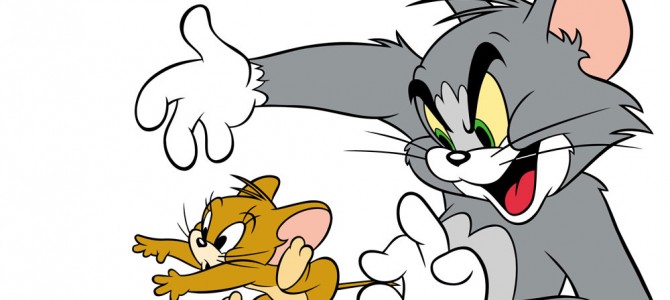My children don’t just watch “Tom and Jerry,” they love “Tom and Jerry.” Nothing makes them double up with laughter more. And yet I can’t be too bothered by the new trigger warning Amazon and Apple are including to warn viewers about “Ethnic and Racial Prejudices” in the show.
I mean, I guess I’m mildly alarmed that people need disclaimers to be told that Mammy Two Shoes is not the most nuanced presentation in the history of cartooning, but I grew up with cartoons that had tons of stereotypes and my parents somehow figured out how to let my siblings and me enjoy them while also reminding us not to, you know, pummel each other, commit suicide or otherwise imitate the characters. In fact, I’d say the stereotypes might do more to prepare young minds for the world ahead than the thousand anodyne, poorly drawn snoozefests now littering children’s programming.
A young girl might do better to learn how to navigate the Pepé Le Pews that will surely inhabit her future than all the “friendship is magic” messages we learn from “My Little Pony.” (And no, I’m not down on “My Little Pony” either.) I let my children watch a wide variety of programming, except for Arthur, that annoying and poorly drawn Canadian aardvark who proselytizes non-stop about the environment and also pushes some questionable religious views. You can be poorly drawn or you can have government-school brainwashing, but not both, you know?
But back to “Tom and Jerry.” Yes, the programs have stereotypes. Here’s the disclaimer, which matches the language of the Whoopi Goldberg-narrated disclaimer you have to view before watching the DVD of “Tom and Jerry”:
"These animated shorts are products of their time. Some of them may depict some of the ethnic and racial prejudices that were commonplace in American society. These depictions were wrong then and are wrong today. While the following does not represent the views of Warner Bros. view of today's society, these animated shorts are being presented as they were originally created, because to do otherwise would be the same as claiming these prejudices never existed."
Goldberg makes it sound less preachy than the written version, but my favorite part is about the “views” of “Warner Bros.” This is the company that is getting ready to premier “Mike Tyson Mysteries,” a new half-hour animated comedy series where Mike Tyson will solve mysteries with the help of the Ghost of the Marquess of Queensbury, Mike’s adopted Korean daughter and a pigeon who was once a man. I need trigger warnings before even thinking about this, and not just because, you know, Mike Tyson is a convicted rapist who bit off Evander Holyfield’s ear.
But yes, Warner Bros. Television, has values that permit producing shows such as the Whitney Cummings-developed “2 Broke Girls,” the completely and deliciously immoral “Nip/Tuck,” and even “George Lopez,” for crying out loud. But we need trigger warnings for “Tom and Jerry”? Really?
I’d go so far as to say that, at least on some level, all good comedy is offensive. It has a target. Sometimes it has multiple targets.
I mean, Speedy Gonzales has basically been off the air in the United States since the end of the previous century, but one of the things that the prudes never figured out was that he was a popular character not because of the ridiculous stereotypes so much as because he always won. Kids love winners. Sombrero-wearing Speedy, fighting “Greengo Pussygato” Sylvester, hindered by his awful cousin Slowpoke, is a character riddled with stereotypes, granted. But what a wonderful character! And we kids loved him because he was always vanquishing his foes. So it ends up being all kinds of stereotype disrupting. Kids can handle this but not the bluenoses in the television or cable standards departments. These are the people who have always been confused at Speedy’s popularity, much more his popularity among Mexican audiences.
Right now we have an incoherent mess of standards. We put trigger warnings on high-quality cartoons and we censor “South Park” episodes that mock Mohammed, but we’re ok with progressive messaging endemic to much of the weak-sauce cartoons pushed out each day and we’re totally fine with “South Park” episodes mocking Jesus.
Maybe we should question the whole trigger warning approach? Shouldn’t all art provoke in some way?
Further, it’s inevitable that good art, be it cartoons for children or the William F. Shakespeare that Ira Glass thinks “sucks,” is going to be a snapshot in time that reveals a lot about the cultural attitudes of the time it was produced. Those attitudes can be both good and bad, but to suggest that viewers are incapable of making sense of the context is insulting—even to kids.








